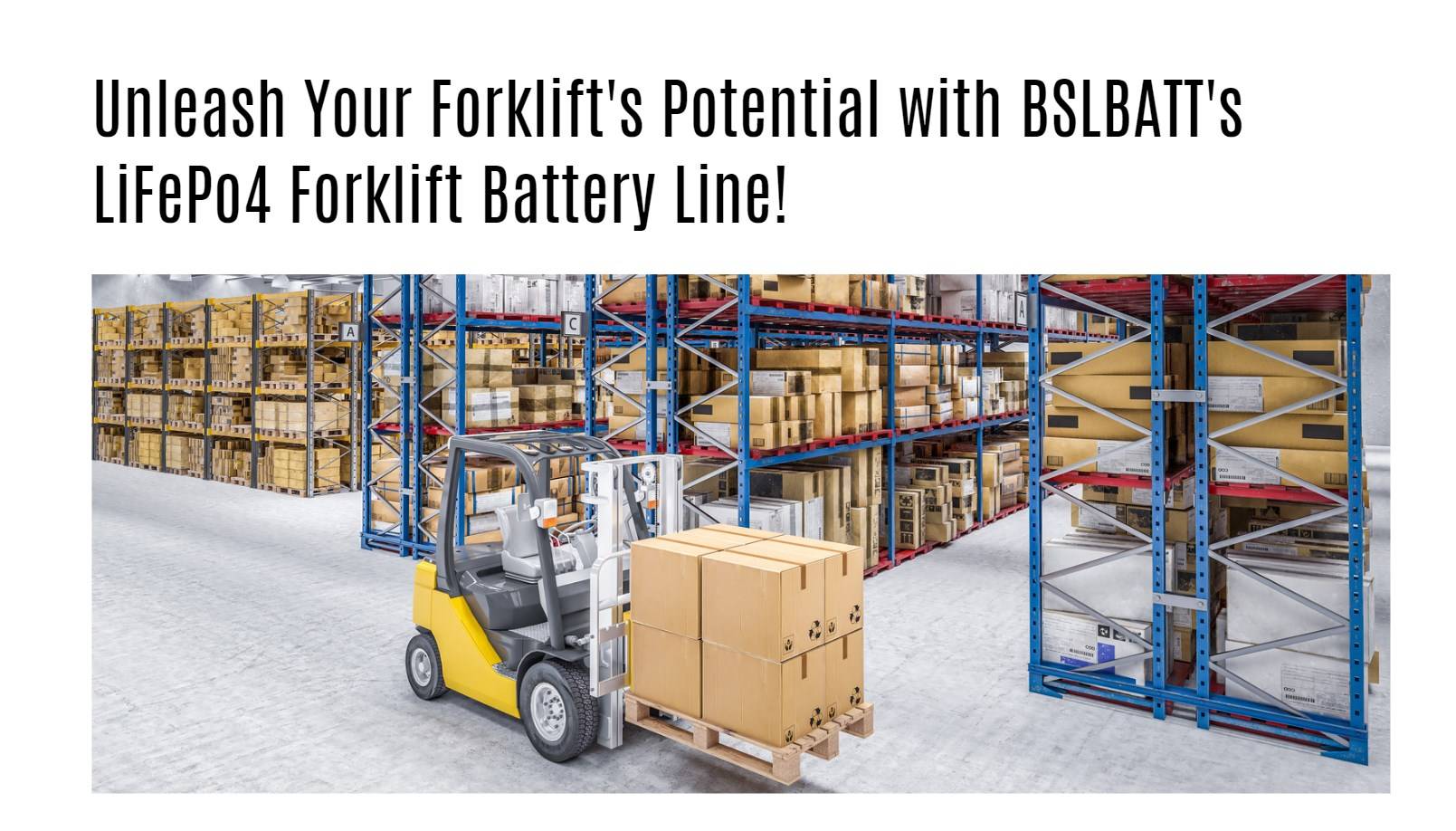BSLBATT’s LiFePO4 forklift batteries are revolutionizing the material handling industry by providing a reliable, efficient, and environmentally friendly power source. This article explores their key features, advantages over traditional batteries, applications, and market trends, illustrating why they are considered game changers.
What are the key features of BSLBATT’s LiFePO4 forklift batteries?
BSLBATT’s LiFePO4 forklift batteries come with several impressive features:
- High Energy Density: These batteries deliver more power in a lighter package compared to lead-acid alternatives.
- Long Cycle Life: With a lifespan of up to 5,000 cycles, they significantly outlast traditional lead-acid batteries.
- Fast Charging Capability: They can be charged quickly, allowing for reduced downtime during operations.
- Integrated Battery Management System (BMS): This system ensures optimal performance and safety by monitoring battery health.
Chart: Key Features of BSLBATT LiFePO4 Forklift Batteries
| Feature | Description |
|---|---|
| Energy Density | Higher than lead-acid |
| Cycle Life | Up to 5,000 cycles |
| Charging Time | Fast charging capabilities |
| Management System | Integrated BMS for safety and efficiency |
How do BSLBATT batteries compare to traditional lead-acid batteries?
When compared to traditional lead-acid batteries, BSLBATT’s LiFePO4 batteries offer significant advantages:
- Weight: LiFePO4 batteries are lighter, improving forklift maneuverability.
- Maintenance: They require no maintenance, unlike lead-acid batteries that need regular watering and monitoring.
- Cost Efficiency: Although the initial investment is higher, lower operational costs over time make them more economical.
Chart: Comparison Between BSLBATT LiFePO4 and Lead-Acid Batteries
| Feature | BSLBATT LiFePO4 | Lead-Acid |
|---|---|---|
| Weight | Lighter | Heavier |
| Maintenance | No maintenance required | Requires regular maintenance |
| Lifespan | Up to 5,000 cycles | 300 – 500 cycles |
| Cost Efficiency | Lower total cost of ownership | Higher long-term costs |
What advantages do lithium-ion batteries offer for forklifts?
Lithium-ion batteries provide several advantages for forklifts:
- Higher Efficiency: They have a higher charge efficiency and can deliver consistent power throughout their discharge cycle.
- Reduced Downtime: Fast charging capabilities mean forklifts can be quickly recharged during breaks, maximizing operational time.
- Environmental Benefits: LiFePO4 technology has a smaller carbon footprint compared to lead-acid production and disposal.
What applications benefit from using BSLBATT’s lithium batteries?
BSLBATT’s lithium-ion forklift batteries are suitable for various applications:
- Warehousing: Ideal for electric forklifts used in high-density storage environments.
- Manufacturing Plants: Provide reliable power for material handling equipment.
- Distribution Centers: Enhance efficiency in logistics operations where quick turnaround is essential.
Chart: Applications of BSLBATT LiFePO4 Forklift Batteries
| Application Type | Description |
|---|---|
| Warehousing | Efficient power for electric forklifts |
| Manufacturing Plants | Reliable energy for material handling |
| Distribution Centers | Quick turnaround in logistics |
How do customer experiences highlight the benefits of these batteries?
Customer testimonials reveal high satisfaction with BSLBATT’s LiFePO4 forklift batteries. Users report significant improvements in operational efficiency and reduced downtime due to faster charging times. Many businesses have noted lower overall costs due to the longevity and maintenance-free nature of these batteries.
What trends are emerging in the forklift battery market?
The forklift battery market is experiencing several trends:
- Shift Towards Lithium Technology: More companies are transitioning from lead-acid to lithium-ion solutions due to their numerous advantages.
- Increased Demand for Sustainability: Businesses are prioritizing eco-friendly solutions as part of their corporate responsibility initiatives.
- Technological Advancements: Innovations in battery management systems and charging technologies are enhancing performance and user experience.
How can businesses effectively transition to lithium battery technology?
To transition successfully:
- Assess Current Equipment Needs: Evaluate existing forklifts and determine compatibility with lithium-ion technology.
- Choose Reputable Suppliers: Partner with established manufacturers like BSLBATT that offer reliable products and support.
- Train Staff on New Systems: Ensure operators understand how to use and maintain lithium-ion systems effectively.
Buy Wholesale Battery Tips
For buyers looking to purchase wholesale batteries or place OEM orders, partnering with a reputable manufacturer like Redway Battery is advisable. With over 13 years of experience in lithium battery production, Redway offers high-quality products tailored to customer specifications. To make OEM orders:
- Identify your specific requirements (capacity, size).
- Contact Redway’s sales team with your specifications.
- Review samples before placing bulk orders.
This process ensures you receive reliable products that meet your needs.
Industrial News
The demand for lithium-ion batteries continues to grow as industries shift towards electric vehicles and renewable energy solutions. Recent reports indicate that leading manufacturers are expanding their production capabilities while developing advanced technologies that enhance battery performance and longevity. Companies are increasingly focusing on sustainability practices in their operations.
Redway Expert Views
“BSLBATT’s commitment to innovation in lithium technology is setting new standards in the industry,” states an expert from Redway Battery. “Their focus on efficiency and sustainability aligns perfectly with market demands.”
FAQ Section
- What are the main benefits of using BSLBATT LiFePO4 forklift batteries?
They offer higher energy density, longer lifespan, lower maintenance needs, and improved safety compared to lead-acid alternatives. - How long do BSLBATT LiFePO4 batteries last?
These batteries can last up to 5,000 cycles or more depending on usage conditions. - Can I use these batteries in any type of forklift?
BSLBATT offers various models designed specifically for different classes of forklifts. - What is the charging time for these batteries?
Charging times vary by model but generally allow for quick recharges during breaks. - Are there any environmental benefits?
Yes, LiFePO4 technology has a smaller carbon footprint compared to traditional lead-acid production.



